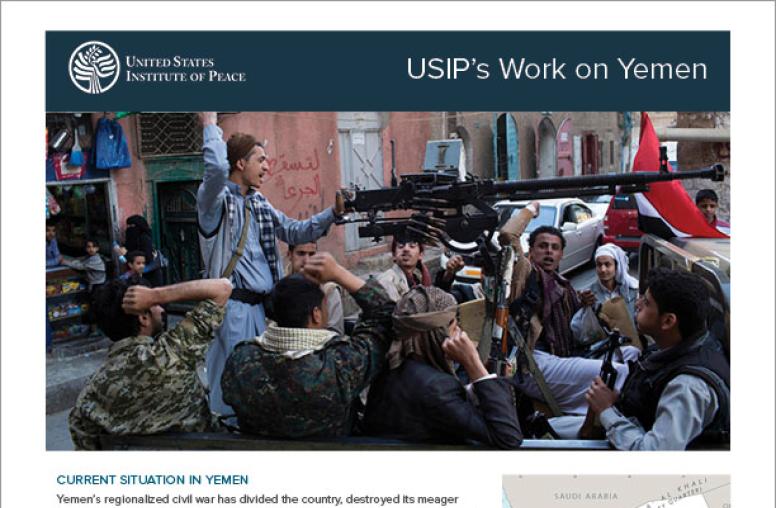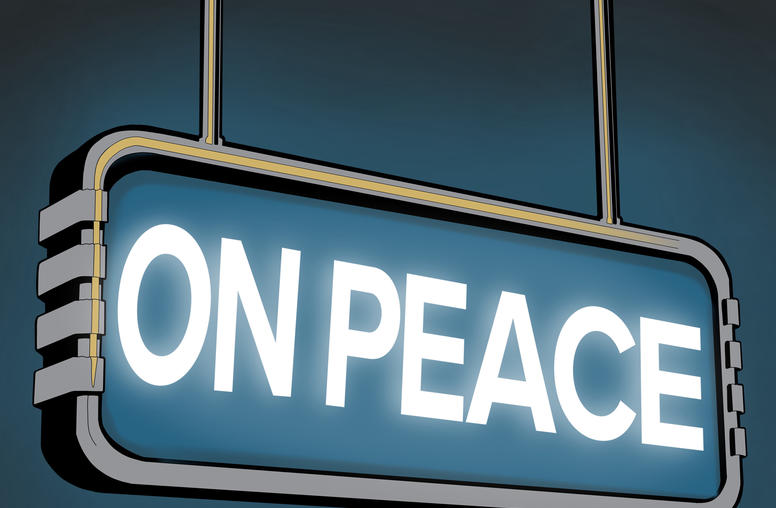Beneath the Saudi-Iran Proxy War in Yemen, Part 2
As U.S. Looks to Escalate, Local Realities Rule
(continued from Part 1)
The strategic clash between Saudi Arabia and Iran in Yemen masks multiple layers of conflict underneath that have deepened—and in some ways altered—the country’s fractures in local politics, society and security. The chaos has devastated Yemen, one of the world’s poorest countries, and has the potential to burst beyond the nation’s borders and further destabilize an already troubled region. It also allows the likes of the Islamic State (ISIS) and Al-Qaeda in the Arabian Peninsula (AQAP) to thrive.

So while it’s important for the U.S. and its partners to seek a political solution at the highest levels, work also needs to be done on the underlying conflicts to dampen the lure of extremist groups and to ease humanitarian conditions. In addition to 50,000 people killed or injured and millions displaced by the war, international organizations estimate that 7 million face starvation in an unfolding famine because of the violence.
Almost three years into the war, Iranian-backed Houthi rebels, associated with the Yemeni Zaidi Shia sect, control the capital in an alliance with former President Ali Abdullah Saleh, while the recognized government of President Abed Rabbo Mansour Hadi is aligned with the Sunni regimes of Saudi Arabia and the United Arab Emirates. But even in the areas under control of each side, internal ruptures persist.
As the near-term prospects for a national peace agreement appear vanishingly small for now, Yemeni partners of the U.S. Institute of Peace urge more support for local-level efforts. These could help address causes and symptoms of the conflict that have grown more complex and bitter in recent years, with deepening foreign military intervention. The profound changes include:
Religious identity: Animosity among religious sects defies Yemeni tradition. Before the current conflict, most Yemenis knew little about Zaidism, the branch of Shia Islam followed by the Houthis, and historically Sunni and Zaidi mosques were largely indistinguishable. As the struggle drags on, Yemenis have become much more defensive of religious identities.
Geographic divides: Yemen has a history of north-south division, but these splits have become much more pronounced since the war began in 2014. Yemenis trying to travel around the country are now more likely to encounter questions about family names and ties, which have social, security and economic implications.
Economic collapse: Yemen was one of the poorest countries in the region before the conflict and the economy has now deteriorated to the brink of collapse, which could aggravate existing conflicts or spark new ones. About 80 percent of the population needs humanitarian aid.
Tribes: Reflecting broader changes in the country’s social fabric, Yemen’s tribes are undergoing a tectonic shift. It is often believed that their loyalties are influenced primarily by financial incentives but also by family relationships, sectarian ties and, in the north, their relationship with former president Saleh. Tribal disputes and revenge killings may be a source of conflict at the local level, even if a national agreement is reached.
Resource scarcity: The growing humanitarian crisis has strained the country’s limited natural resources. Local conflicts over land, water and other resources have the potential to escalate into wider conflicts, especially in areas without access to functioning police or justice mechanisms.
Internally Displaced Persons (IDPs): There are now about 3 million IDPs in Yemen, most of whom have relocated to the capital, Sanaa. As more people flee their homes and communities, issues such as the legitimacy of land ownership have become more contentious.
Youth: In some places, especially the city of Taiz, now half-controlled by the Houthis, Yemeni youth feel they have run out of options economically and politically. The youth population is vulnerable to recruitment by armed and extremist groups, which could generate future violence.
Bringing peace and strategic stability to Yemen clearly requires a top-level political solution among the major actors driving the war. Yet waiting for a national agreement may mean losing a chance to prevent cycles of violence from taking root in local communities. If such opportunities are missed, the consequences will eventually be felt at every level of this torn and fragile nation.



